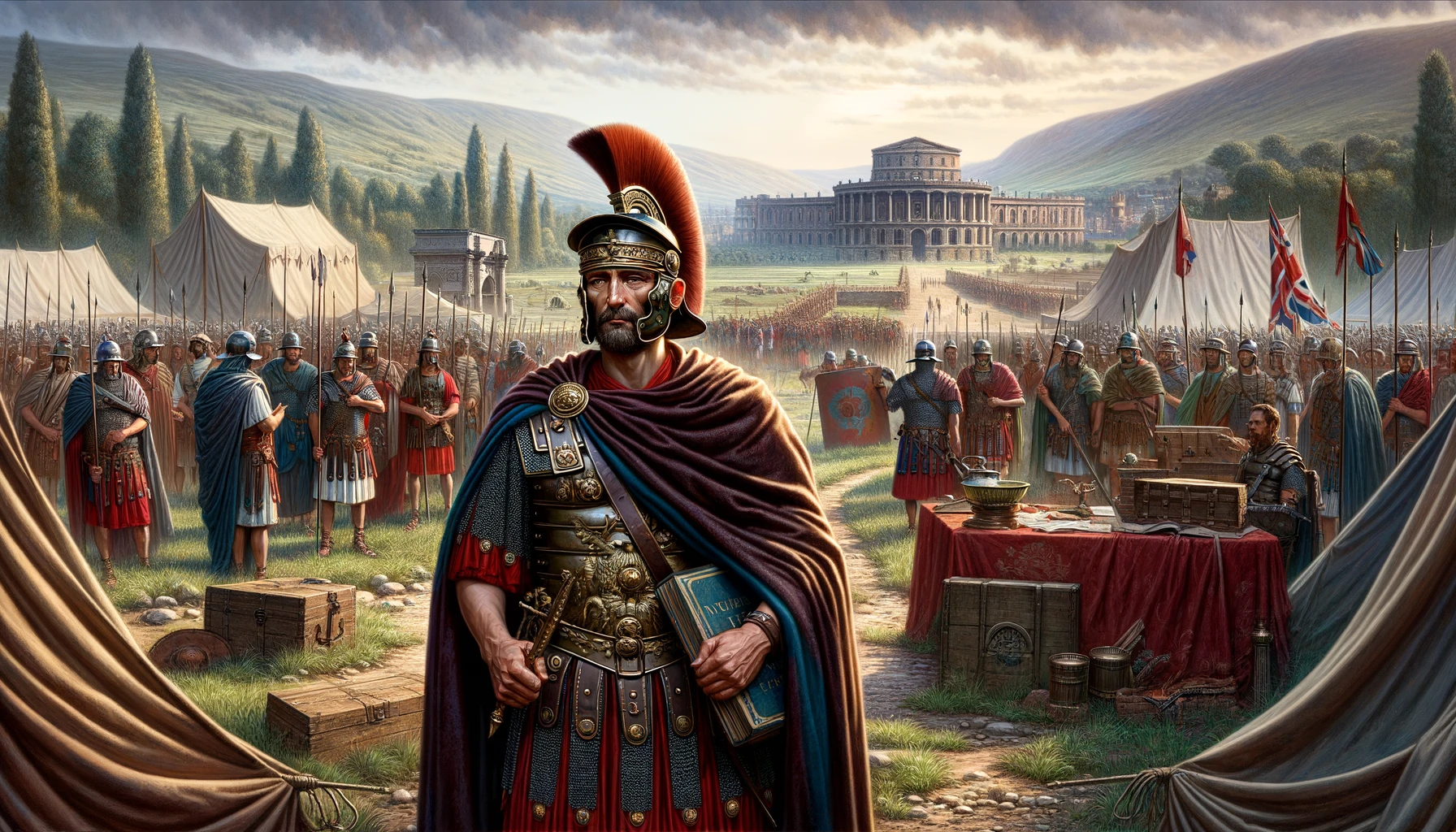The exploits of the Roman Governor Gaius Suetonius Paulinus in Britain, in particular the revolt in south-east England, are recorded by Cornelius Tacitus in his Annals of Rome (book XIV, chapters xxix-xxxviii) and The Agricola (XIV.iii – XVI.ii), also by Cassius Dio in his History of Rome (book LXII, chapters i-xi). Although many modern works have been written on the subject, the best by a long chalk is Boudica by Graham Webster (Batsford, London, 1978).
C. Suetonius Paullinus, who succeeded Veranius as governor, was also renowned for his military prowess. He had gained recognition for being the first Roman general to lead a crossing of the Atlas mountains in Mauretania, which had honed his skills in mountain warfare. It was likely this expertise that had earned him the responsibility of leading expeditions into Wales and the Pennines.
By 60 AD, Paullinus had successfully subdued Wales and was preparing to cross the waters to Angelsey, the last refuge of the rebels. The island was strategically chosen by the Britons as it was surrounded by water, leaving them with no option for retreat other than towards the sea. Moreover, the island was known to be a stronghold of the Druids, a powerful group in Britain, and was fiercely defended by praying Druids, formidable warriors, and ferocious women. The assault on Angelsey was brutal and savage, with the defenders fighting desperately for their lives.
Amidst the intense battles on Angelsey, Paullinus was unaware that a grave threat was looming behind him. The worst from the British forces was yet to come, but he was preoccupied with the arduous task of capturing the island and defeating its resolute defenders.
The Campaigns of Paulinus against Boudica of the Iceni
Military Installations Attributed to Ostorius Scapula in Britain
| Name | N.G.Ref. | Description |
|---|---|---|
| Viroconium (Wroxeter, Shropshire) | SJ5608 | legionary fortress Legio XIV Gemina. |
| Longthorpe, Cambridgeshire | TL1597 | vexillation fortress Legio IX Hispana. |
| Glevum (Gloucester) | SO8318 | vexillation fortress Legio XX Valeria Victrix. |
| Burrium (Usk, Gwent) | SO3700 | vexillation fortress Legio XX Valeria Victrix. |
| Isca Dumnoniorum (Exeter, Devon) | SX9292 | legionary fortress Legio II Augusta. |
| Aquae Sulis (Bath, Avon) | ST7564 | probable fort, occupied by cohorts of Legio XX Valeria Victrix perhaps also Ala I Thracum |
| Corinium (Cirencester, Gloucesterhire) | SP0201 | fort, guarding the civitas of the Dobunni perhaps garrisoned by Ala Gallorum Indiana |
| Camulodunum (Colchester, Essex) | TL9925 | Colonia, pre-Roman capital of the Trinovantes. |
| Londinium (London) | TQ3281 | Claudian administrative centre |
| Verulamium (St. Albans, Hertfordshire) | TL1307 | municipium and civitas capital of the Catuvellauni. |
| Pennocrucium (Water Eaton, Staffordshire) | SJ9010 | earlier fort, contemporary marching camps? later fort? |
| Letocetum (Wall, Staffordshire) | SK0906 | earlier fort, contemporary marching camp? possibly of Paulinus expeditionary force returning from North Wales. |
| Greensforge, South Staffordshire | SO8688 | earlier fort, contemporary marching camps? later fort? |
| Caesaromagus (Chelmsford, Essex) | TL7006 | fort, later civitas of the Trinovantes. |
| Combretovium (Baylham House, Suffolk) | TM1152 | fort, on the border between the Iceni and the Trinovantes. |
| Sitomagus (Ixworth, Suffolk) | TL9369 | fort, on the border between the Iceni and the Catuvellauni. |
| Great Casterton, Leicestershire | TF0009 | fort, on the border between the Iceni and the Coritani. |
| The Lunt, Baginton, Coventry, Warwickshire | SP3475 | fort and horse-training gyrus |
References for Roman Military Campaigns -Gaius Suetonius Paulinus ( AD58-61)
- The Roman Invasion of Britain by Graham Webster (Batsford, London, 1980);
- Rome Against Caratacus by Graham Webster (Batsford, London, 1981);
- Boudicca by Graham Webster (Batsford, London, 1978);
- Britons and the Roman Army by Grace Simpson (Gregg, London, 1964);
- Historical Map and Guide: Roman Britain by the OS (3rd Edition, 1956; 4th Ed., 1990; 5th Ed., 2001);
